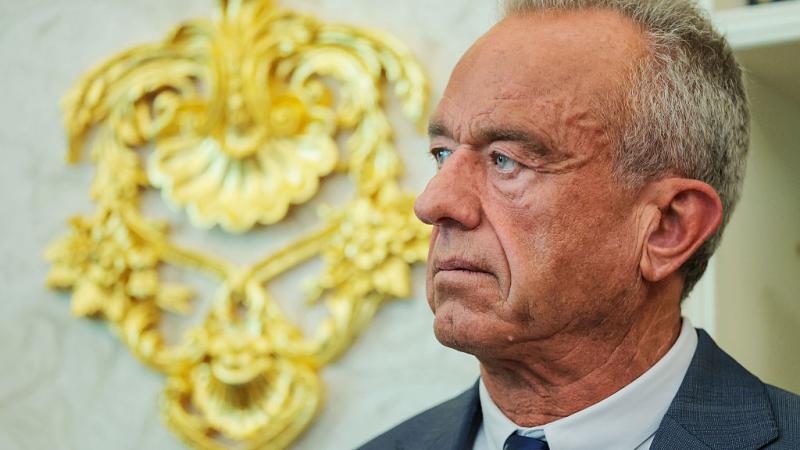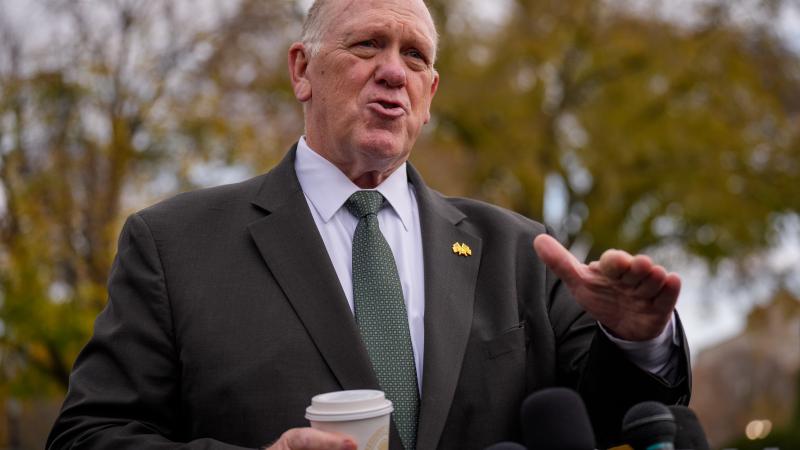Coronavirus spikes in regions with strict lockdowns re-ignite debate over effectiveness
Some doctors and statistical analyses are re-evaluating the effectiveness of extreme lockdowns after a new wave of infections.
Coronavirus infection rates are spiking in countries and some U.S. communities that imposed strict pandemic mitigation policies, including lengthy lockdowns and stay-at-home orders. The dynamic is raising fresh questions about how effective those measures ultimately are at halting the spread of the virus.
Governments worldwide began instituting far-reaching laws and executive orders earlier this year in concerted efforts to slow the spread of the novel coronavirus. Following the Chinese government's lead in that country's Wuhan province, governments in Europe and North America, including most U.S. governors, imposed quarantines, stay-at-home orders and lockdowns, shuttering much of the world's economy and ordering tens of millions of people to remain in their homes for months.
In many countries, gradual economic re-openings were accompanied by careful, staggered "phases" in which restrictions were lifted, and sometimes re-imposed, according to the level of viral spread in the community. Many governments also ordered citizens to wear masks in public.
Authorities have argued that these policies were, and continue to be, successful at stopping or slowing the spread of the virus. Yet recent spikes in places where lockdowns have been strictly imposed for months -- from Australia to Great Britain and California to Hawaii -- suggest that such measures may have more limited effect than health authorities initially anticipated. The benefit in easing crushes on hospitals has been touted by many but the long-term ability to stop the spread of the disease remains in doubt.
It's a debate that likely won't be settled for at least another year but has found new life in the recent resurgence of cases worldwide.
"A lockdown might delay severe cases for a while, but once restrictions are eased, cases will reappear," Johan Giesecke, the former state epidemiologist for Sweden and the former chief scientist at the European Centre for Disease Prevention and Control, argued in May.
"Measures to flatten the curve might have an effect, but a lockdown only pushes the severe cases into the future —it will not prevent them," he added.
Bloomberg News recently published a column earlier this month entitled "When Lockdowns Don't Work" that garnered some attention, as did a study in the Lancet online journal EClinicalMedicine, that concluded "government actions such as border closures, full lockdowns, and a high rate of Covid-19 testing were not associated with statistically significant reductions in the number of critical cases or overall mortality."
Professor Mark Woolhouse, an infectious disease expert at Edinburgh University and a member of Great Britain's Scientific Advisory Group on Emergencies, has sounded concern that the mitigation efforts had more effect on slowing the global economy than crushing the virus. "When the reckoning comes we may well find that the cure turned out to be far worse than the disease," Woolhouse was quoted in the Daily Mail.
Hawaii spikes; California continued steady climb
In the U.S., the states of Hawaii and California have both seen infections rise even after months-long lockdowns and strict mitigation measures.
California Democratic Gov. Gavin Newsom has kept his state under strong lockdown measures of varying degrees since March; though Newsom began slowly loosening the restrictions in early May, he reimposed many of them in early July, closing down indoor dining and other entertainment venues in counties where he deemed the spread of COVID-19 too high.
In mid-July he extended those re-closure orders statewide, while further shutting down indoor worship, malls, barbershops and hair salons in counties with high infection numbers. He also ordered state citizens to wear face masks starting June 18.
Review of the state's COVID-19 data indicate that cases in California continued to rise whether it was locked down or partially re-open. The state's COVID-19 dashboard shows it only began seeing a sustained drop in average daily cases in late July, though those numbers began increasing around Aug. 10 again.
Hawaii has arguably instituted even more aggressive lockdown measures than California: It requires visitors to the island, as well as returning residents, to quarantine upon arriving there, essentially shuttering the state's critical tourism industry. Gov. David Ige also instituted a stay-at-home order in late March, one that lasted, with modifications, until the end of June. The state shut down indoor dining at restaurants; when Ige began permitting indoor dining again, it was with strict regulations, including capacity limits, social distancing requirements and mask orders. As with California, residents are under a public mask mandate there as well.
Hawaii's lockdown and relative isolation appear to have spared it the worst of the coronavirus crisis from late April onwards. Yet cases began to go up again in mid-June, and from late July onward they have been spiking, according to the state's coronavirus dashboard. Unlike the first, smaller wave in March, which was brought on largely by travel-related cases, most of these new cases so far have been from community transmission of the virus.
The raw number of COVID-19 cases in the state are still relatively small compared to even the lesser-affected states on the U.S. mainland. Yet the spike has still been markedly swift, particularly when considering the measures the state undertook to squash the virus.
Notably, the average number of tests conducted by the state has not increased significantly since early July, meaning the spike cannot immediately be attributed to an increase in testing. Indeed, though the testing rate has remained relatively the same statewide since then, the percentage of positive tests has skyrocketed, going from an average of 0.9% in mid-July to 5.5% this week.
Spain, Japan, Philippines experience similar spikes
Jumps in cases have likewise been observed in numerous other countries that have undertaken strong mitigation efforts.
Spain — regions of which in late March and early April were overwhelmed with high rates of coronavirus cases and deaths — largely bottomed out in both fatalities and infection rates starting in late May. Yet beginning in early July, cases began to rise again. By early August the country was recording thousands of new infections every day, though deaths have continued to remain flat.
That spike comes after Spain in May dictated a strict lockdown in which residents for a time were forbidden even to go on walks outside of their residences. The easing of that lockdown was tempered by a "new normality" policy, one in which regions were given some autonomy in determining the extent of local restrictions but which imposes broad health restrictions on industries such as consumer shops and hotels.
The Philippines has also seen cases spike in spite of a face mask mandate that started at the beginning of April. The country began easing its lockdown in early June, though measures still remained in place throughout June and July; in the last week the country began reimposing more restrictions as cases surged there.
Japan, meanwhile, has for months been hailed as a prime example of coronavirus mitigation. That country has undertaken comparatively few forceful mitigation policies, instead relying on citizens to impose voluntary distancing measures and other mitigation efforts. Experts and commentators have argued that heavy mask usage there has likely played a role in the country's success: An Ipsos poll in April revealed that 77% of Japanese citizens said they were wearing masks to protect themselves from COVID-19.
Yet Japan since late July has posted increasingly high COVID-19 counts, dwarfing the short spike it had in April. Multiple days over roughly the past week have seen more than 1,000 confirmed cases, while the peak earlier this year saw just 743 cases in one 24-hour period.
Part of Japan's apparent earlier success could be explained by its relatively sparse testing. The country has tested significantly fewer of its citizens than many other nations: By mid-August, for instance, the U.S. was performing nearly 1100% more tests per thousand citizens than Japan. The country has increased its daily testing rates by about 300% since the end of June, which may explain why it has begun to record more coronavirus infections, giving the appearance of a spike where cases had actually been all along.
Lockdown effectiveness will likely be decided months or years from now
The ultimate efficacy of lockdowns at stopping the spread of COVID-19 will likely not be known for many more months or years until sufficient data can be analyzed.
What may matter significantly in the end is by what measure lockdowns are evaluated. Most authorities who did so initially undertook shutdowns in order to "flatten the curve," or keep caseloads at manageable levels in order to prevent medical systems from collapsing under the weight of huge patient influxes. Yet many governments kept mitigation measures in place well after the hospital crush, with some insisting that such measures would have to remain in place until a vaccine was developed.
An international team of researchers in June utilized national data from several countries to estimate that lockdowns "significantly and substantially slowed" infection rates in those places. Data from many countries do show a decline in average daily new cases weeks after the lockdowns were imposed. Yet in some cases, such as California, lockdowns seemed to have little effect, while in other countries the virus resurged after even moderate re-openings with plenty of mitigatory measures in please.
Giesecke noted that Sweden—a country that has imposed virtually no lockdown measures of any kind, particularly compared to much of the rest of the world—does have a higher death rate than its Nordic neighbors and many other countries. But he pointed out that its death rate is lower than those of the U.K. and Spain, both of which imposed strict lockdowns.
"I expect that when we count the number of deaths from COVID-19 in each country in 1 year from now," he wrote, "the figures will be similar, regardless of measures taken."
















